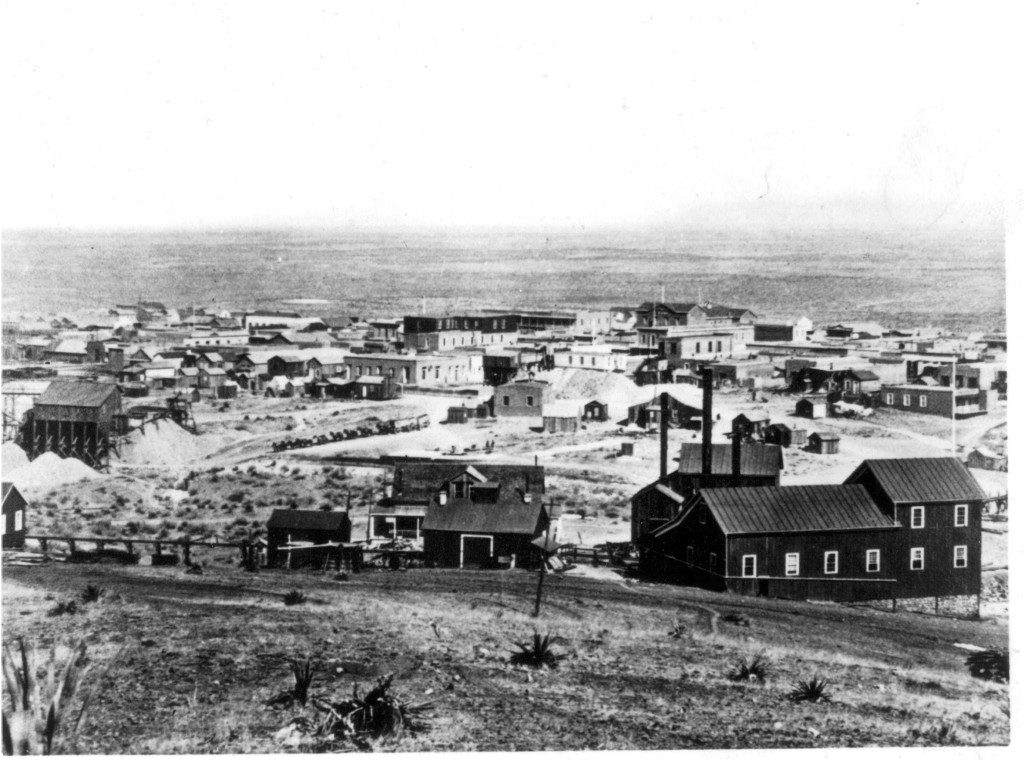Good morning, Whitewater.
Midweek in Whitewater will be rainy, with possible thundershowers, and with a daytime high of forty-eight. Sunrise is 7:23 AM and sunset 5:54 PM, for 10h 30m 55s of daytime. The moon is a waning crescent with 16% of its visible disk illuminated.
Whitewater’s Tech Park Board meets at 8 AM, and the Community Development Board at 5:30 PM.

Tombstone, Arizona in 1881 photographed by C. S. Fly. An ore wagon at the center of the image is pulled by 15 or 16 mules leaving town for one of the mines or on the way to a mill. The town had a population of about 4,000 that year with 600 dwellings and two church buildings. There were 650 men working in the nearby mines. The Tough Nut hoisting works are in the right foreground. The firehouse is behind the ore wagons, with the Russ House hotel just to the left of it. The dark, tall building above the Russ House is the Grand Hotel, and the top of Schieffelin Hall (1881) is visible to the right.
On this day in 1881, the most famous gunfight in the Old West takes place in Tombstone, Arizona Territory:
The Gunfight at the O.K. Corral was a 30-second shootout between lawmen and members of a loosely organized group of outlaws called the Cowboys that took place at about 3:00 p.m. on Wednesday, October 26, 1881, in Tombstone, Arizona Territory. It is generally regarded as the most famous shootout in the history of the American Wild West. The gunfight was the result of a long-simmering feud, with Cowboys Billy Claiborne, Ikeand Billy Clanton, and Tom and Frank McLaury on one side and town Marshal Virgil Earp, Special Policeman Morgan Earp, Special Policeman Wyatt Earp and temporary policeman Doc Holliday on the other side. All three Earp brothers had been the target of repeated death threats made by the Cowboys, who were upset by the Earps’ interference in their illegal activities. Billy Clanton and both McLaury brothers were killed. Ike Clanton claimed he was unarmed and ran from the fight, along with Billy Claiborne. Virgil, Morgan, and Doc Holliday were wounded, but Wyatt Earp was unharmed. The shootout has come to represent a period of the American Old West when the frontier was virtually an open range for outlaws, largely unopposed by law enforcement officers, who were spread thin over vast territories.
The gunfight was not well-known to the American public until 1931, when Stuart Lake published an initially well-received biography, Wyatt Earp: Frontier Marshal, two years after Earp’s death.[1] The book was the basis for the 1946 film My Darling Clementine, directed by John Ford,[1] and the 1957 film Gunfight at the O.K. Corral, after which the shootout became known by that name. Since then, the conflict has been portrayed with varying degrees of accuracy in numerous Western films and books, and has become an archetype for much of the popular imagery associated with the Old West.
On this day in 1818, Wisconsin receives her first counties:
1818 – First Counties in Wisconsin Declared
On this date Lewis Cass, governor of the Michigan Territory, declared the first counties in Wisconsin. The counties included Michilimackinac (all areas drained by Lake Superior tributaries), Brown, and Crawford counties, which were separated through Portage. Michilimackinac County is now part of the state of Michigan. Governor Cass later became the Secretary of War under President Andrew Jackson, as well as the Minister to France and a Michigan Senator. Cass, a Democrat, also ran for president in 1848, but lost to Whig Zachary Taylor due to factions within the Democratic Party and the formation of the Free Soil Party. [Source: Historic Elmwood Cemetery and Foundation]
JigZone’s dailly puzzle for Wednesday is of tennis balls:
